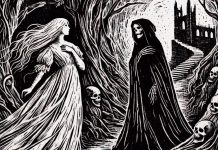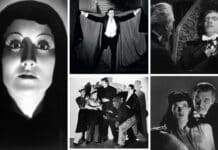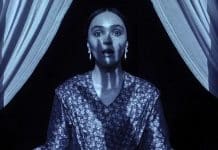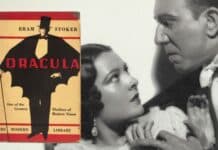JON KANEKO-JAMES returns from the land of Dracula to tell you about Revenants, Romania’s undead!
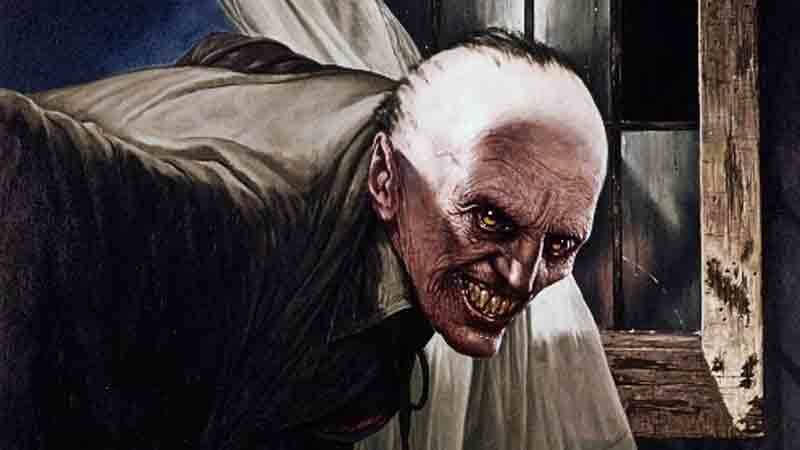
This week Spooky Isles will be bringing you a bit of an exchange program: rather than concentrating on just Britain today, we’ll be talking about the undead of Romania!
The Land Beyond The Forest…
At the beginning of September, Spooky Isles formed what writer Paul Adams termed, “Team Dracula” for an outing to Wallachia and Transylvania to see some of the Dracula sites that could be found in the southerly parts of the country.
It was an absolutely amazing trip where we saw Castle Bran (which our guide and tour company called ‘The Fake Castle Dracula’, which was hastily chosen by the Romanian tourist authorities so that they could make a much-needed buck off American tourists), Vlad Tepes’ birthplace in the Saxon fortress town of Sighisoira and one of his two possible burial sites on the island monastery of Snagov.
One of the most interesting things for me was that every time we spoke to one of our Romanian guides about Dracula they were keen to explain that although Romania was very proud of Vlad Tepes (he holds a place in Romanian culture that’s quite similar to Britain’s admiration for Richard the Lionheart), they were sad to say that it didn’t have any native vampires.
I wasn’t too surprised: last October I saw a small exhibition of all the research materials that Bram Stoker requested via the London Library. He did most, if not all, of his research from a desk and it’s unlikely that he ever went to Romania. With that in mind, you might expect that Dracula would be resolutely British/Irish in his makeup, and yet Dracula is very different
Vampires vs Revenants
Dracula can walk in the daylight – it’s rarely, if ever, specified that British undead can’t walk in the daylight, but since they’re based on Augustine’s assumption that evil spirits were transmitted through an etheric fluid in the darkness, it’s safe to suggest that they can’t.
Dracula gains actual sustenance from blood. There are undead creatures that seem to sicken those whom they plague: William of Newburgh records the case of a clergyman who returns to force himself on a woman who had been his lover in life, but it isn’t through drinking her blood; Walter Map writes of a pilgrim who discovered a possessed woman eating her newborn children, but the blood around her mouth is entirely because she is devouring the child’s flesh; another Walter Map story recounts a ‘certain evil Welshman’ who drains the life out of his neighbours, summoning them to the grave, but again, it isn’t really suggested that he gains any sustenance from it.
One way in which Dracula does resemble a British Revenant is that he changes shape: in the Bylands manuscript, recorded by a monk in the 1400s, we see Revenants who can change shape prodigiously: from a storm of hey with a light in the middle, to a bird-like creature, to a goat to a horse, and finally to a man.
So, how do these British Revanents match up to their Romanian cousins?
Strigoi
The most commonly known revenant seems to be the Strigoi. This is the one that the majority of actual Romanians seem to have heard of.
There are a huge number of things that could turn someone into a Strigoi. While the causes of undeath are fairly straightforward in Britain (being a bad person in life, suffering some irregularity in your funeral rites, dying with some unforgiven sin, or dying violently) the reasons that someone can become a Strigoi are dizzyingly varied: caul-bearers are vulnerable, as are seventh sons of seventh sons, people born with a tail, oath-breakers, sinners, werewolves, and ginger people.
Strigoi also show a strange dichotomy in their appearances. They can be huge and bestial, with red eyes and fingernails like sickles… or they can be skeletons barely covered with skin (unless, that is, they appear as muscular dwarves.)
Strigoi appear at midnight with their caskets on their back, and wherever they go, they bring disease. In fact, just like a West European Revenant, they drain something from the community they belonged to in life: kinfolk start to get sick and die off. Claude Lecouteux even suggests that they physically drink blood.
Strigoi are also a social nuisance: they make a racket at night and have battles with improvised weapons, staging battles to be named the King of the Revenants. They steal wool and use it to spin their red shirts.
The ways listed to deal with them in Romanian folklore seem to be largely preventative: caul-bearers and those born with tails can be cured at birth if the proper rituals are followed. Oath breakers can be forgiven, and Werewolves can be restrained by placing a thorned branch over their graves.
Gingers and Seventh Sons are out of luck. Nothing short of dismemberment will do for them.
The Moroiu
Our guides in Romania described the Moroiu as being ‘more modern’ than the Strigoi.
These creatures remind me of phenomenom found on British moorland: they are the spirits of children who die before being baptised. In Britain there are stories abound of unborn babies becoming the prey of ‘Yell Hounds’ on the moors (or, in some stories, turning into them).m
In Romania, the unbaptised child becomes a lumbering, heavyset creature. Seven years after its death it would shout “Baptism, baptism!” from its grave (again, this is very similar to one of the stories from the Bylands Manuscript, where a man is followed by the ghost of his unbaptised child who was buried in a boot). Like the British story, if someone hears the cry and gives the baptismal formula, gifting the spirit with a piece of cloth, then the haunting will end.
If no one hears, then the child would transform into a six-foot flame, soaring over the surface of the ground. In addition it its lumbering, physically powerful form it and turning into a living flame, it is said to be able to appear as a cat, a hare or a woman in white.
Further more, the Muriou, once the chance to baptise them is missed, cannot be dismissed by the sign of the cross or daylight. According to Southwestern Romanian folklore, the only way to destroy them is to dig up their grave and cast their heart to the dogs, although garlic seems to be believed to provide some protection.
Zburator
While there are other Romanian undead (like the
It’s said that the Zburator, or spirit-lover, appears as a large, thin, good looking young man who slips into houses via the chimney and ravished those who were consumed by love. Girls would be left with all the signs of a night of lovemaking: bruises, bite marks, kisses and so on.
Unfortunately for them, they would sink into sickness, melancholy and madness, and then die. This is very similar not to the British undead, but the faerie lover who drives his paramour into a state of madness and exhaustion before either killing them or carrying them off.
“Romanian Vampires, Coming Over Here, Drinking Our Blood…”
While Claude Lecouteux’s book, The Secret History of the Vampires, does suggest that most of these Romanian undead drink blood, other sources have suggested that they take a more spiritual sustenance, much like British Revenants.
And while the Muroiu does seem to be able to walk in daylight, like Dracula, it seems to have many more things in common with the Scandinavian roots of our British undead, right down to its craving for an honest baptism.
So, while Stoker took some liberties with the Count (the Romanian reaction to the way everyone else in the world thinks of Vlad Tepes is similar to how we’d react if we found out the world thought Richard the Lionheart was a Werewolf), it turns out that Romanian undead aren’t that different to our own. Aside from an enhanced appreciation for the power of garlic, there isn’t anything going bump in the Romanian night that you couldn’t find in the villages of Yorkshire.
Have you been to Romania to discover the land of vampires? Tell us about it in the comments section below!


